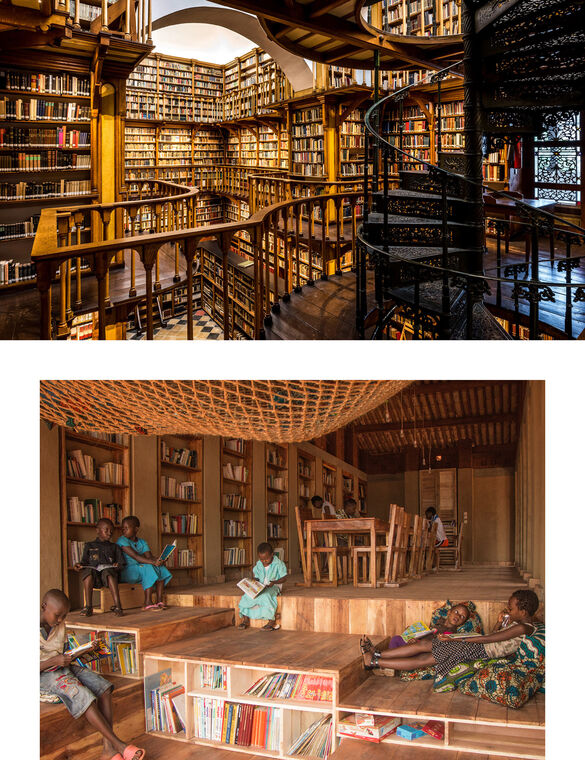The Latin motto of the Jesuit library at Maria Laach Abbey, in Germany, is Claustra sine bibliotheca sine armatura, or “A monastery without a library is like a fortress without weapons.” The abbey, which was founded in 1093, is home to one of several libraries that are highlighted for their stunning collections in the forthcoming volume Temples of Books.
Alongside the monastery libraries of Maria Laach, St. Catherine’s (a 2,000-year-old wonder at the foot of Mount Sinai, in Egypt), and Wiblingen (rococo personified, in Ulm, Germany), Temples of Books contains many other treasures spanning time and place. The world’s oldest surviving library, dating back to the ninth century, stands firm in Fez, Morocco. Vienna’s Austrian National Library, which married Emperor Charles VI’s passions for books and Baroque architecture, continues to hold a copy of every book published in the country. Mexico City’s Biblioteca Vasconcelos offers lessons in literature but also modern style. And the Uncensored Library does away with the physical altogether. Existing exclusively online, it makes the censored works of journalists from all over the world freely accessible—an increasingly relevant and important mission.
The Roman emperor Hadrian had his eponymous library, complete with four halls, an extensive archive of scrolls, and a column-lined courtyard, in Athens. Its ruins still stand on the north side of the Acropolis. Across the Mediterranean Sea lay the Great Library of Alexandria. Today, its successor, the Bibliotheca Alexandrina, carries on its legacy. —Julia Vitale











